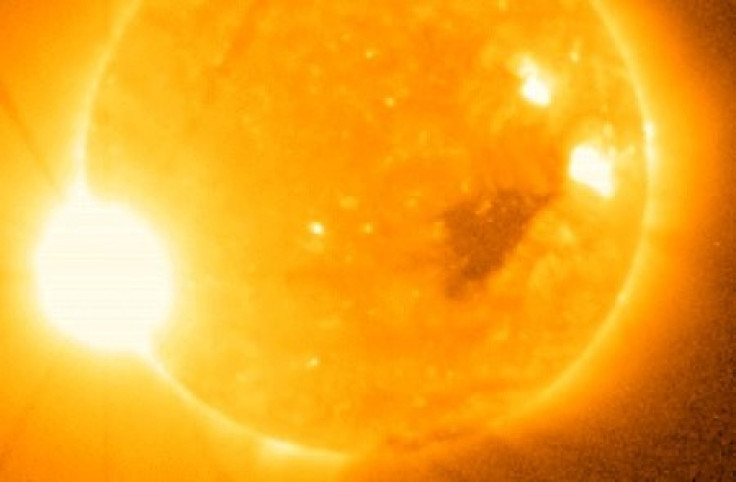Sun Emits New Pattern of Solar Flares Scheduled to Last for Nine Years

New solar flare and solar storm activity Tuesday was the biggest in several years and is part of a pattern of solar storms scheduled to last until 2020.
U.S. National Oceanic and Atmospheric Administration predicted four "extreme" solar emissions which could threaten the Earth this decade, and with solar flare activity expected to peak around 2013, the Sun is entering a particularly active time and big flares like recent one will likely be common during the next few years, federal scientists say.
The agency, which watches the condition of the oceans and atmosphere, says a looming wave of solar storms could cause global chaos, wreck satellite communications and take down the most important power grids in the world over a period of years.
Three large explosions from the sun over the past few days have prompted U.S. government scientists to caution users of satellite, telecommunications and electric equipment to prepare for possible disruptions over the next few days.
With solar activity expected to peak around 2013, the sun is entering a particularly active time and big flares like recent one will likely be common during the next few years.
"The magnetic storm that is soon to develop probably will be in the moderate to strong level," Joseph Kunches, a scientist at MOAA's Space Weather Prediction Center, told Reuters.
The NOAA predicted four "extreme" solar emissions which could threaten the planet this decade.
Similarly, NASA warned that a peak in the sun's magnetic energy cycle and the number of sun spots or flares around 2013 could produce extremely high radiation levels.
This is a special problem in the United States, especially in the East, as federal studies warn that this extreme solar activity and emissions may result in complete blackouts for years, in several areas of the nation.
A storm of similar magnitude today could cause up to $2 trillion in damage globally, according to a 2008 report by the National Research Council, Reuters reports.
Moreover, there may also be disruption of power supply for years together or even decades as geomagnetic currents attracted by the storm could debilitate the transformers.
Last month, the Nuclear Regulatory Commission said U.S. plants affected by a blackout should be able to cope without electricity for at least eight hours and should have procedures to keep the reactor and spent-fuel pool cool for 72 hours.
Check the video:
© Copyright IBTimes 2024. All rights reserved.











